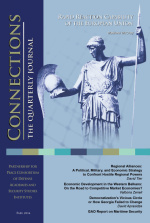Russia and China have recently displayed aggressive actions that have steadily garnered international concern. The United States, as a country interested in preserving the existing international order, share apprehensions towards potential disruptions that could affect its interests. The intensifying nationalist sentiment of rising powers, their increasing military strength, demonstrable willingness to employ military aggression, and freshly invigorated territorial claims cause defenders of the status quo to worry that war is on the horizon. Will Russia and China make a bold attempt to seize what they claim as theirs? No fewer than two other regional powers give cause for concern. Neighbors of North Korea and Iran warily keep watch for aggressive actions from these “rogue” states. To what extent should threatened neighbors take precautions to protect their territorial integrity in the interests of national security? As seen in some recent signs of weakness from the threatened, a new generation of untested leaders and their respective populations must learn the lessons of “peace through strength” in order to protect themselves from possible aggression. Threatened countries should create, strengthen, and expand military alliances between mutually interested partners, grow military capability by ensuring adequate defense spending, and demonstrate the willingness to take military action against aggressors in order to lessen the threat of attack.
Starting with an assessment of the present challenges, then examining how global powers should shield regional alliances during their formation, and lastly, analyzing the respective failure and success of alliances of World War I and the Cold War, this article proposes a strategy to thwart potentially hostile state-based regional powers. A nation or alliance facing a hostile regional power must match at least one-third of the potential aggressor’s defense spending to discourage an aggressor, but should aim for matching two-thirds. Global powers should foster the formation of regional alliances in order to maintain the status quo.
Regional Alliances: A Political, Military, and Economic Strategy to Confront Hostile Regional Powers
Abstract:
Article statistics
Tier, David. (2014) 2014. “Regional Alliances: A Political, Military, and Economic Strategy to Confront Hostile Regional Powers”. Connections: The Quarterly Journal 13 (4): 25-52. doi:http://dx.doi.org/10.11610/Connections.13.4.02.
26517
Views

